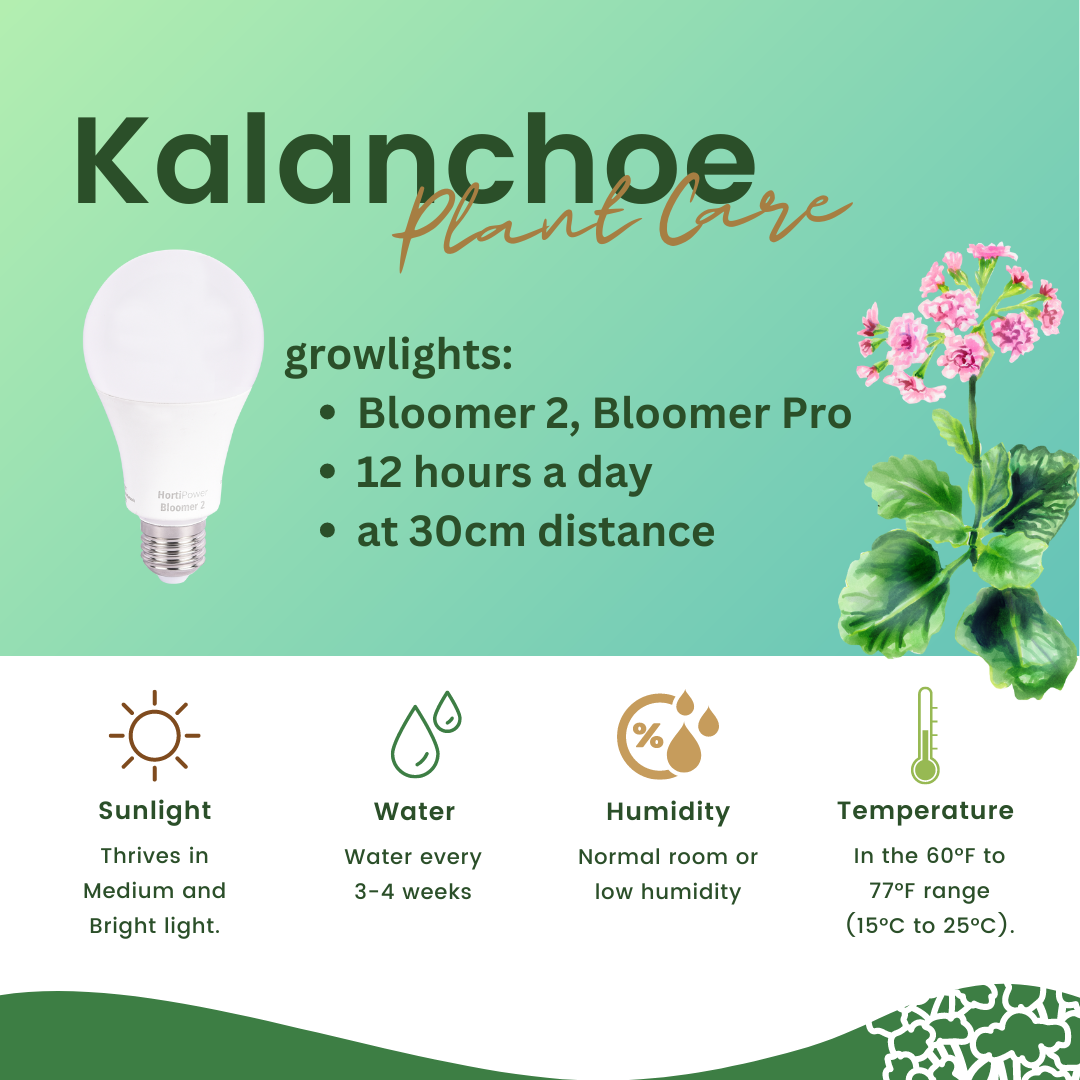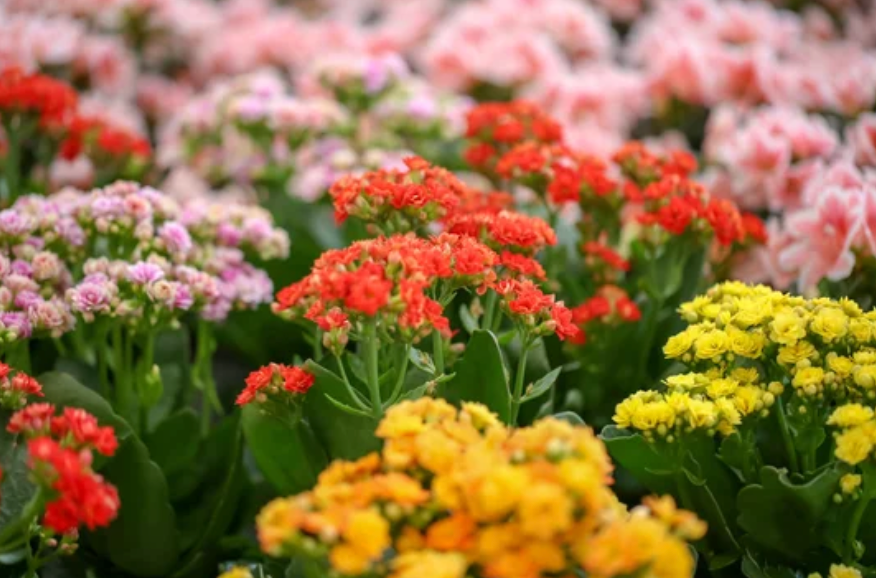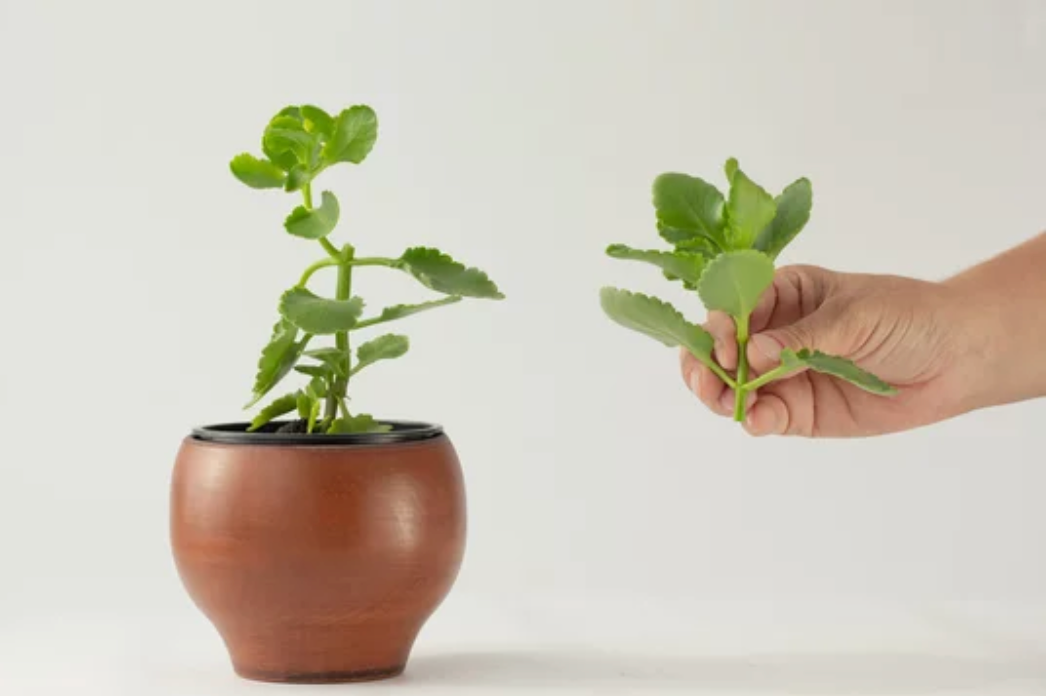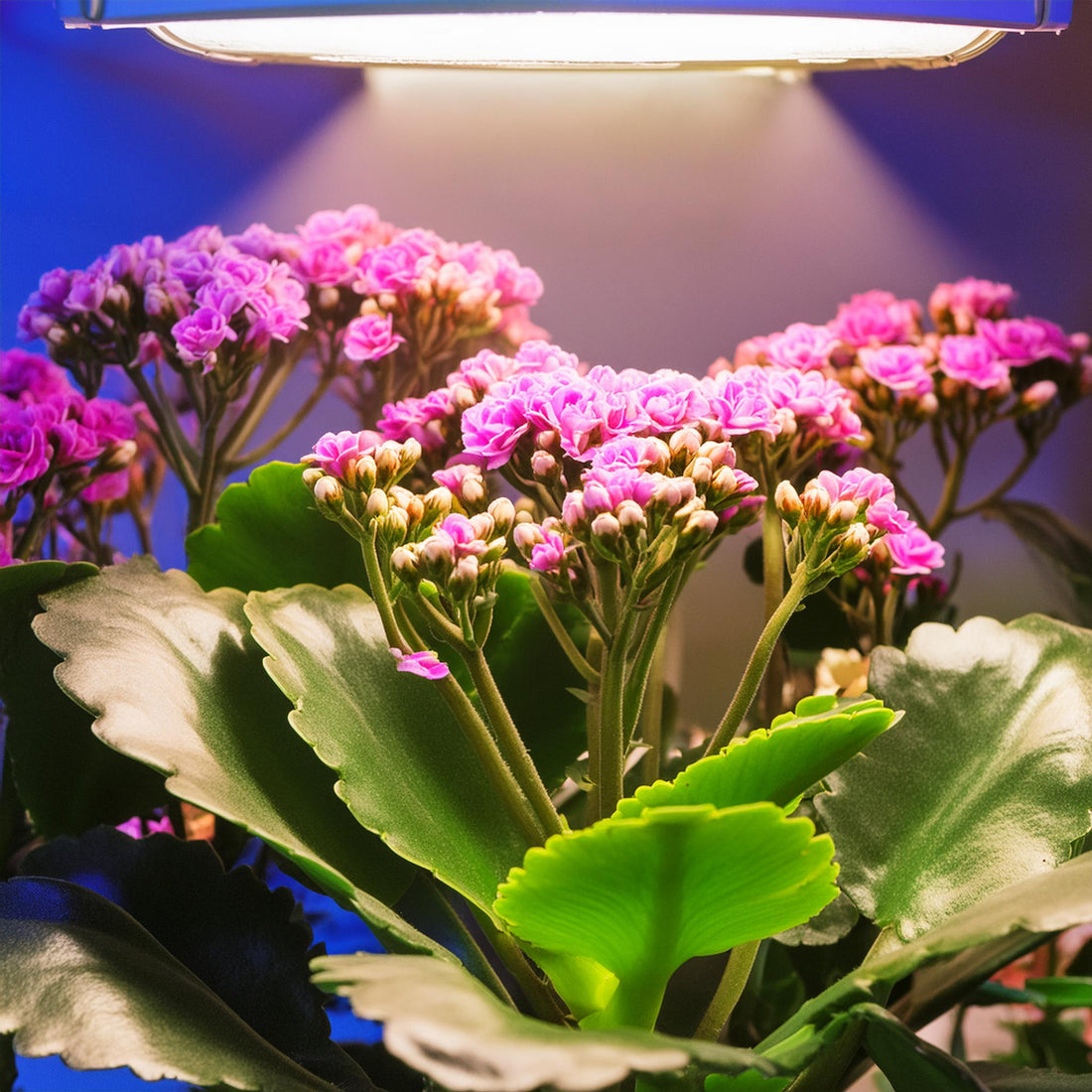Kalanchoe is a versatile and easy-to-care-for houseplant that brightens up any space with its beautiful flowers and interesting leaf shapes. With proper care and possibly the use of a grow light like the Bloomer 2, you can enjoy this unique plant for a long time. Whether you choose the colorful Kalanchoe blossfeldiana, the intriguing Mother of Thousands, or one of the other fascinating varieties, Kalanchoe is a great addition to any household. When using a grow light for your Kalanchoe plant, keep in mind that higher light levels can lead to more flowers and larger flower clusters, while the right temperature balance is crucial for optimal flower size and faster blooming. Use growlights for 12 to 16 hours if you aim for growth and 8 to 12 hours if you aim for flowering and reblooming your Kalanchoe.
Edited by: AI, Jille Kuipers

Table of Contents
- Introduction
- Origin and Characteristics of Kalanchoe
- Popular Kalanchoe Varieties
- 3.1 Kalanchoe blossfeldiana
- 3.2 Kalanchoe daigremontiana (Mother of Thousands)
- 3.3 Kalanchoe delagoensis (Mother of Millions)
- 3.4 Kalanchoe tomentosa (Panda Plant)
- 3.5 Kalanchoe thyrsiflora (Desert Rose)
- 3.6 Other Interesting Kalanchoe Varieties
- Kalanchoe Care
- 4.1 Location and Light
- 4.2 Watering and Humidity
- 4.3 Fertilizing
- 4.4 Pruning and Shaping
- 4.5 Repotting and Soil Type
- Using a Grow Light for Kalanchoe
- Scientific basis of using grow lights for Kalanchoe
- Propagation by Cuttings
- Frequently Asked Questions About Kalanchoe
Introduction
Kalanchoe is a popular houseplant beloved for its easy care, long blooming period, and wide variety of colors and shapes. In this article, we dive deeper into the world of Kalanchoe and provide you with all the information you need to bring this beautiful plant into your home and care for it.
Origin and Characteristics of Kalanchoe
Kalanchoe belongs to the succulent family (Crassulaceae) and is native to Madagascar, Africa, Southeast Asia, and China. There are approximately 125 known species. The plant is characterized by its thick, fleshy leaves and striking flowers in various colors.
Popular Kalanchoe Varieties
3.1 Kalanchoe blossfeldiana
Kalanchoe blossfeldiana is the most well-known variety with single or double flowers in clusters. The flowers come in different colors, and the plant has smooth, scalloped leaves.

3.2 Kalanchoe daigremontiana (Mother of Thousands)
This variety is known for its unique leaves with tiny plantlets along the edges. The plantlets fall to the ground and grow there, hence the nickname "Mother of Thousands".
3.3 Kalanchoe delagoensis (Mother of Millions)
Similar to Mother of Thousands but with narrower leaves and more plantlets. Sometimes orange, trumpet-shaped flowers appear.
3.4 Kalanchoe tomentosa (Panda Plant)
The Panda Plant has soft, fuzzy, thick leaves with brown spots along the edges. A real eye-catcher and perfect to touch.
3.5 Kalanchoe thyrsiflora (Desert Rose)
The Desert Rose has semi-circular, grayish-green leaves with a purplish-brown edge that grow in a rosette, making the plant resemble a rose.
3.6 Other Interesting Kalanchoe Varieties
Other noteworthy varieties include Kalanchoe 'Pink Butterfly', Kalanchoe beharensis (Elephant's Ear), Kalanchoe pinnata, Kalanchoe 'Magic Bells', and Kalanchoe 'Lucky Bells'.
Kalanchoe Care
4.1 Location and Light
Kalanchoes love plenty of light and can even tolerate direct sunlight. A spot in partial shade is also suitable. The ideal temperature is between 15-25°C (60-77°F). Protect it from extreme heat or cold, as it is sensitive to temperature fluctuations.
4.2 Watering and Humidity
Kalanchoe does not need much water, allow the top inch of the soil to dry out before watering again. You can also let the plant drink (instead of watering from the top). Place the pot into some water and let it drink for 2 to 5 minutes. Once a week is usually sufficient. Allow the soil to almost dry out between watering and ensure that no water remains in the pot. Overwatering can lead to root rot, so it's important to maintain well-draining soil. Low humidity is not a problem for this plant. During the growing season (spring and summer), water more frequently, and reduce watering during the dormant period (fall and winter).
4.3 Fertilizing
In spring and summer, cactus or succulent fertilizer or universal houseplant fertilizer can be given every three to four weeks to stimulate flowering. You do not need to feed during the winter or dormant period.
4.4 Pruning and Shaping
Pruning is not necessary, but spent flower stalks can be snipped or cut off at the base. Wear gloves when pruning, as the sap can irritate the skin. Removing any dead or faded flowers can encourage new blooms and maintain a tidy appearance. You can also trim leggy stems to promote bushier growth.

4.5 Repotting and Soil Type
Repot Kalanchoe every year in the spring, or when the pot is full of roots. Use universal potting soil for houseplants or cactus soil. A mixture of potting soil, perlite, and sand works well. Repot when crowded. Does not enjoy being pot bound.
Using a Grow Light for Kalanchoe
Although Kalanchoes need plenty of light, it can be challenging to provide enough natural light in some situations. In these cases, a grow light can be a solution. A grow light provides the right spectrum of light that the plant needs to grow and bloom.
Tips for using a grow light:
-
Choose a full-spectrum grow light, such as an LED grow light like the Bloomer 2, Bloomer Pro or if you're growing them in a rack Nurser 3. These types of lamps mimic the light that plants require.
-
Place the grow light about 30-50 cm (12-20 inches) above the plant, depending on the lamp's strength.
-
Let the grow light burn for 12-16 hours per day, depending on the amount of natural light the plant receives.
-
To trigger the plant into a flowering response, use the growlight for a maximum of 12 hours per day as kalanchoe is a short-day plant.
-
Adjust the distance and burning hours of the grow light based on the plant's response. If the plant gets too much light, the leaves may turn yellow or burn.
A grow light can stimulate the growth and flowering of Kalanchoe, especially during the dark winter months or when the plant is placed in a location with little natural light. Kalanchoe produces vibrant and long-lasting flowers in various colors, including red, pink, orange, and yellow. With proper care, your Kalanchoe can bloom multiple times throughout the year. Without growlights, Kalanchoe may enter a period of dormancy in the fall or winter, during which it may shed some leaves. Reduce watering and provide slightly cooler temperatures during this time.
Scientific basis of using grow lights for Kalanchoe
Kalanchoes are easy to propagate by cutting off a stem or leaf and allowing it to dry before placing it in moist soil. After about two weeks, roots will have formed.
Frequently Asked Questions About Kalanchoe
Is Kalanchoe toxic?
Yes, the plant is toxic to children and pets. Always consult a doctor or veterinarian if ingested.
How long does Kalanchoe stay in bloom?
Most varieties bloom for about 8 weeks.
Can Kalanchoe bloom again?
Yes, by placing the plant in a dark room for 5 weeks after flowering and then placing it back in the light, the plant can bloom again.
Where can I order growlights for Kalanchoe?
You can order the Bloomer 2 here and the Bloomer Pro here.


